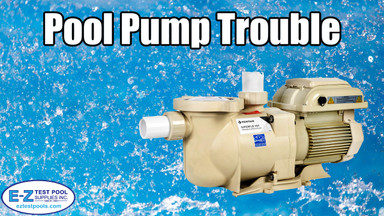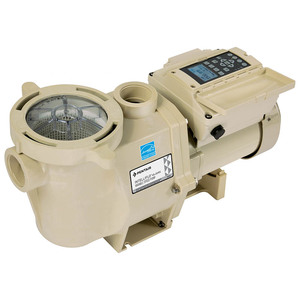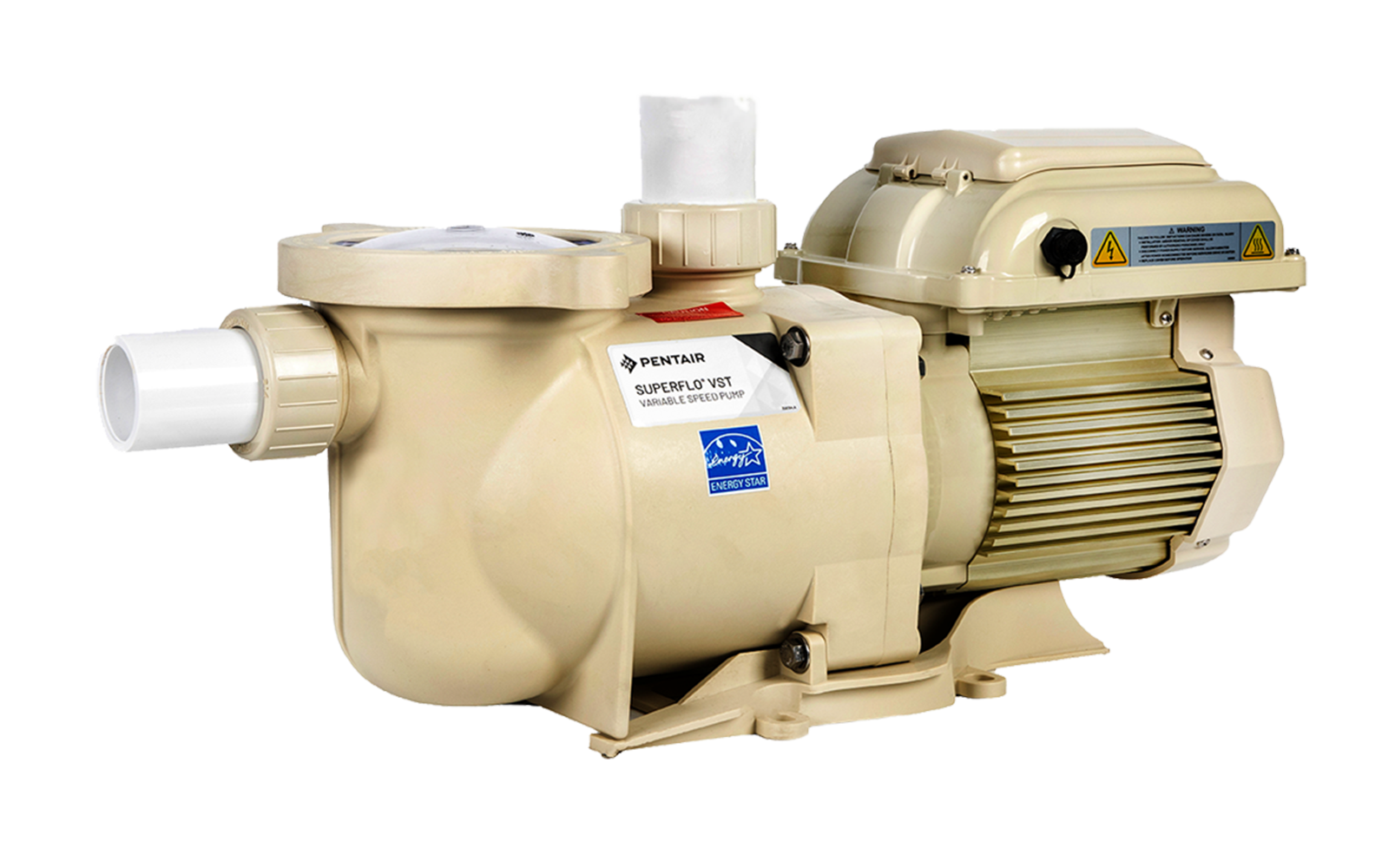Published by EZ Pool & Spa Supply on 07/19/2017
Pool Pump Failure: Common Causes and Prevention
Sooner or later even the best, quality-made equipment will reach the end of its useful life, break and need replacing. Really, when you think about it, any machine that runs 12 hours a day, every day (for however long your season is) at 3450 RPM’s (revolutions per minute) will eventually end up in the scrap heap. Such is the case with your pool pump. The key here is to maximize the life of the pump by being aware of some potential problems, remedying those issues, and choosing the right pump to replace your old pump when that time comes. So here is the question:
Q: What can I do to avoid premature failure on the pool pump?
So let’s start right in with a brief course in pump anatomy. There are 2 main portions to your pool pump, the electric motor and the wet end of the pump. The electric motor is the simplest part to understand. It is responsible for starting up and turning the pump at full speed in order to operate. The wet end is generally all of the parts on the opposite end from the motor and consists of parts that rarely break or fail. There is the trap or strainer pot where water first enters the pump and the lid (usually clear plastic). The pump basket, like the one at the skimmer, is there to catch large debris before it clogs and slows down the pump. Then there is an impeller (water wheel) which draws into the pump and pushes water out towards the filter. Many pumps will also have a diffuser before the impeller which works like a reverse funnel, focusing and drawing water into the center of the impeller. There is also a water seal where the shaft of the motor meets the wet end of the pump near the impeller. The purpose of this is to allow the shaft to turn at high speeds without letting water leak out from the wet end.
In fact if you reach down and place your hand near the motor you will feel quite a bit of heat emanating from it. The important thing is to minimize this heat, thereby extending the life of the components. Always be sure to allow for good air flow around the motor by not letting mulch, dirt, bushes or other intruding items to crowd the motor. All of these things will trap heat, prevent air flow from cooling the motor and lead to a dead motor!
Using a filter that is too small for the pump to push water through will also labor the pump, as will having pipes that are simply too small entering and exiting the pump. The analogy I use with my customers to demonstrate how restrictive this is would be like you trying to run a marathon with a pair of socks stuffed in your mouth! Always allow for good flow.
Other offenders that may indirectly result in heat damage are the following: shut valves, clogged pipes, impellers plugged with debris such as leaves, pine needles, or tree nuts such as acorns that have passed all the way to the pump. It is especially for these reasons NEVER to operate your pool without the skimmer and the pump baskets in place!
Heat damage occurs in other ways as well. When a pump loses prime, or stops pulling the water to itself, this reduced or nonexistent flow of water causes the motor to run hot. If this happens for long enough, parts on the wet end (basket, trap, etc.) may warp and the motor is susceptible to burnout. This loss of prime may be due to air leaks on the incoming pipes, trap cover, low water in the pool, or even a stuck weir door on the skimmer. When a pump is functioning properly the water should be right at or near the top of the trap – look right through the lid – no leaks should be visible, and the pumps should be functioning with a low hum, not loud sloshing or sucking noises.
Excess water on the ground in the pump area is an issue as well. Yes, pumps are made to function outside and will get wet from the weather with no real problems. There is a problem, however, when poor drainage causes standing water from storms to linger around the motor. In short, the motor is not made to function sitting in a puddle of water. If this is a concern, immediately make allowances for drainage so that water never can accumulate around the motor.
Electrical issues lead to problems too. A loose connector, improper wiring or faulty ground will eventually cause problems with the motor and shorten its life. Even infestation of insects or small snakes under the wiring cover on the end of the motor will wreak havoc. For this reason check all connections and remove the cover at the beginning of the season (WITH THE POWER SHUT OFF!) every year.
And last but not least physical damage to the pump and motor will lead to failure. Dropping the pump onto a hard surface or a branch hitting from a falling tree may crack the motor casing or bend the motor shaft. Be careful not to over tighten pump fittings or drain plugs. This is especially easy to do when using Teflon tape on the threads. The Teflon tape makes for a great seal, however it allows the fittings and plugs to turn more easily beyond where they should be tightened, leading to cracked parts and broken fittings.
So take care when operating your pump/motor and maximize their lifespan. And when it does come time to replace, I would seriously ask you to consider investing in a variable speed pump. Hayward’s Super Pump VSP will cost you a bit more to buy from your pool dealer than a traditional pump, but will save you a ton in ongoing operating costs, last longer due to less internal heat generated, as well as running much more quietly than your old pump! Click on the link below to shop our Variable Speed Pumps.








